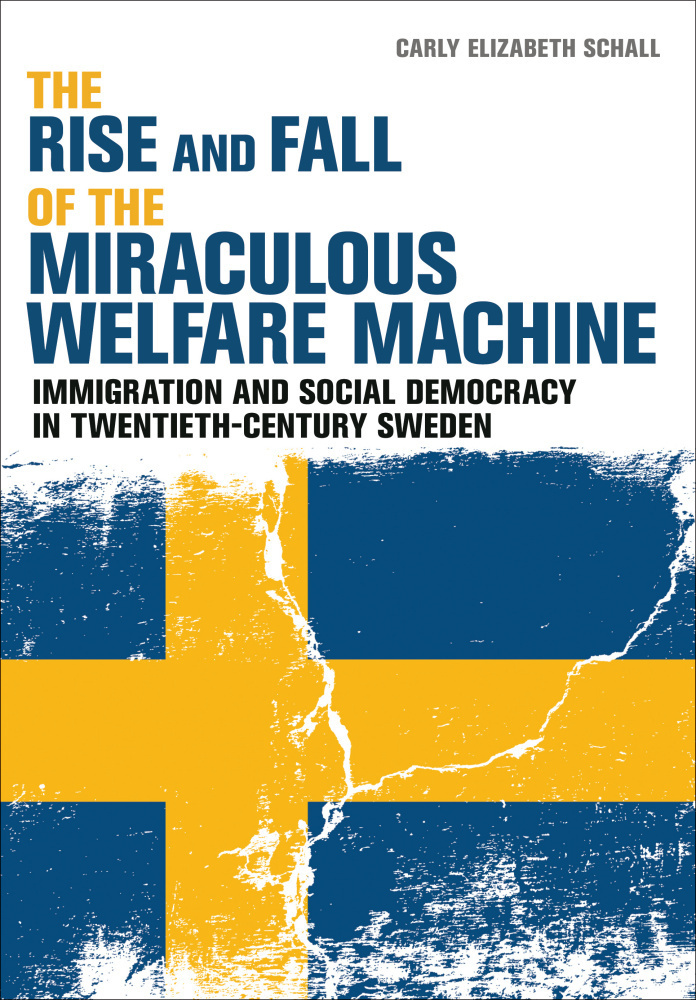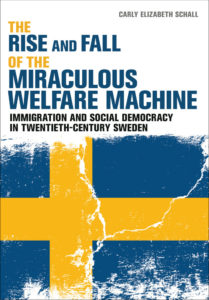
 What ever happened to the “Swedish Model?” Though Sweden has lost little of its luster, particularly in the eyes of the world’s equality-minded policymakers, it is no longer the favored synonym for egalitarian prosperity it once was. Today, hunting for models of the “good society,” observers seem more likely to look southward and talk, as Francis Fukuyama does, of “getting to Denmark.” Or they look west to the Norwegians, who have not only erected their own impressive welfare state, but cannily transformed massive stores of oil and gas in the North Sea into a supermassive sovereign wealth fund. To the east, Finland’s high-achieving K-12 school system has made it the educational envy of the world. Sweden’s headlines, though often positive, seem increasingly pockmarked with news of high youth unemployment, struggles to integrate immigrants, and the belated surge of a confident, xenophobic far right. One hears less about the “Swedish Model” and more about the “Nordic Model” or the “Scandinavian Model”—does this say more about Sweden or its neighbors?
What ever happened to the “Swedish Model?” Though Sweden has lost little of its luster, particularly in the eyes of the world’s equality-minded policymakers, it is no longer the favored synonym for egalitarian prosperity it once was. Today, hunting for models of the “good society,” observers seem more likely to look southward and talk, as Francis Fukuyama does, of “getting to Denmark.” Or they look west to the Norwegians, who have not only erected their own impressive welfare state, but cannily transformed massive stores of oil and gas in the North Sea into a supermassive sovereign wealth fund. To the east, Finland’s high-achieving K-12 school system has made it the educational envy of the world. Sweden’s headlines, though often positive, seem increasingly pockmarked with news of high youth unemployment, struggles to integrate immigrants, and the belated surge of a confident, xenophobic far right. One hears less about the “Swedish Model” and more about the “Nordic Model” or the “Scandinavian Model”—does this say more about Sweden or its neighbors?
In her new book, The Rise and Fall of the Miraculous Welfare Machine, historical sociologist Carly Elizabeth Schall suggests that the twilight of the Swedish Model has both come and gone.
In her new book, The Rise and Fall of the Miraculous Welfare Machine, historical sociologist Carly Elizabeth Schall suggests that the twilight of the Swedish Model has both come and gone. Tracing Swedish social democracy from the late 1920s to the most recent national election in 2014, she argues that Sweden’s inclusive and generous regime of social protection—the titular “miraculous welfare machine”—was founded and maintained based on evolving understandings of the Swedish nation as a bounded community. At various critical junctures, or what she terms “crises of closure,” an elite dominated by the Swedish Social Democratic Party (SAP) managed the ambiguities of membership in this community by clarifying not only who did and did not belong, but also who was and who was not eligible to access to its growing array of public goods and services. In this sense, Schall claims, the famous Swedish folkhem—or “People’s Home”—was not just a social and economic model, but first and foremost a cultural one. And as a hegemonic cultural model, Schall argues, it functioned magnificently for decades until it proved unable to manage economic and immigration issues in the 1990s. Heretical ideological currents fostered during this period eventually resulted in back-to-back victories for the center-right Alliansen coalition in 2006 and 2010, as well as the 2010 parliamentary breakthrough of the welfare chauvinist Sweden Democrats.
At 200 pages, The Rise and Fall is a slender and clearly-written study of Swedish social democracy. In the Introduction Schall reviews literature on immigration and the welfare state. Joining Weber’s work on “social closure” to Gramsci’s notion of hegemony, she crafts an original analytical framework for understanding shifting conceptions of Swedishness as reflective of SAP’s simultaneous need to define the nation and will to fashion and maintain a social democratic cultural hegemony encompassing that nation. This framework supplies Schall with a workable—if unwieldly—conceptual vocabulary and a logical narrative structure anchored by the aforementioned “crises of closure,” or “relatively short-lived, acute challenges to the agreed-upon boundaries of a membership community” (8). During these crises, pertaining either to access to the community or access to the community’s goods, elites, guided by strategic concerns and constrained by their cultural context, interpreted conditions and redefined the terms of belonging and access. These redefinitions resulted in a new cultural context that would impose its own interpretive constraints, and so on. “The overarching conclusion of this book’s narrative,” Schall writes, “is that homogeneity and heterogeneity matter for the welfare state because elites make it matter” (13).
The rest of the book, comprising a series of chapters and brief interludes divided into two parts, develops this argument. The first part, “Homogeneity in the People’s Home” tracks the SAP’s rise to power and subsequent tenure as the undisputed center of Swedish politics. In Chapter One, devoted to the period 1928-1932, Schall credits SAP’s spectacular 1932 electoral breakthrough to the party’s ingenious conversion from a vehicle for the interests of the working class to one of the whole folk. Armed with “a set of highly resonant conceptions of the nation” (36), SAP, under the leadership of Per Albin Hansson, outlined a vision of Sweden as a space of solidarity and care—the so-called People’s Home. But who was counted as part of “the people” exactly? Juxtaposing Hansson’s famous 1928 People’s Home speech, an influential 1926 text on race, and an account of differing contemporary policy responses to minorities and co-ethnics, Schall attempts to show that Hansson and SAP saw the Swedish folk in “mixed” terms, “linking the inclusiveness of an ethnic nation with the state-guaranteed egalitarianism of a civic nation” (54).
In Chapter Two, covering the formative period of the welfare state from 1945 to 1950, Schall examines the selective treatment of Nordic, Jewish, and other refugees.
In Chapter Two, covering the formative period of the welfare state from 1945 to 1950, Schall examines the selective treatment of Nordic, Jewish, and other refugees. Her main contention is that SAP policy toward non-Nordic refugees was understood as a kind of “charity” while the benefits and services of the growing welfare state, to which co-Nordics had access, were seen as an expression of “solidarity” (73). Despite the similarity of the actual institutions and schemes available to both groups, the distinction between charity and solidarity functioned as a symbolic barrier between peoples and expressed their differential membership in the People’s Home. For the true insiders, “SAP sought to make support for social policies into a national characteristic, defined welfare as Swedish, and Sweden as a welfare state” (81). Part I concludes with the first of two brief interludes in which Schall summarizes the key points of the previous chapters with reference to the book’s central metaphor, the “welfare machine.”
In Part Two, “Heterogeneity in the People’s Home,” Schall follows the evolving imagined community of the Swedish welfare state through second half of the twentieth century. Leaping forward nearly thirty years, Chapter Three examines the high period of labor migration and parses what Schall contends were the three animating values of contemporary Swedish social democracy: security, equality, and freedom of choice. This latter discussion foreshadows the conflict between equality and freedom of choice that would so bedevil social democracy in the 1990s. Chapter Four, focusing on the period between 1991 and 1995, tackles the breakdown of social democratic hegemony amidst economic troubles and a widespread view of the welfare system’s failure to integrate immigrants into Swedish society. Schall deftly surveys the collapse of elite consensus and maps the new political orientations that have come to dominate Swedish politics. Following a second short interlude, Chapter Five brings the story into the 21st century, emphasizing “a new stable and consistent support for the center-right” and “the rise of the anti-immigrant far right” (163). In a concluding chapter, Schall summarizes her argument and while admitting that the Swedish welfare system is largely intact, nevertheless observes that “[a] particular Swedish version of neoliberalism has finally become the powerful counterhegemony necessary for a revolution” (199).
Schall’s narration of the fate of Swedish social democracy is novel and thought-provoking. Positing that the Swedish welfare system is in part constituted by the hegemonic understanding of the Swedish imagined community, she convincingly locates a significant source of social democracy’s current troubles in the People’s Home’s struggle with difference, exacerbated by clashing conceptions of equality and freedom of choice. Both experts and readers new to Swedish politics will find the book’s latter chapters to be a useful guide to the multi-sided debate on both the welfare state and immigration, as Schall clearly proves to be a more perspicuous observer of Sweden during the “fall.” Schall is also to be commended for examining the welfare state as a cultural system. Comparative welfare scholarship has devoted much of its attention to electoral politics, social expenditures, institutions, and policies. It is refreshing and revealing to see the evolution of the Swedish Model linked also to shifting ethnic and civic conceptions of the national community. Schall rightly signals that understanding the rising tide of right-wing populism and welfare chauvinism, in Sweden and elsewhere, requires one to see that the construction of the welfare state involved decades of discursive boundary-work that transformed not only economic institutions but shared ideas of what it means to be part of the national community (i.e. what it means to be Swedish) and what one must possess to be accepted into it.
And yet, despite its promise, The Rise and Fall suffers from at least two significant issues. First, Schall’s arguments are glaringly light on empirical evidence. Given the The Rise and Fall’s strong claims about the Swedish Model, readers will be disappointed to discover that the book’s primary sources consist almost entirely of op-eds and unsigned editorials from a handful of newspapers (Arbetet, Dagens Nyheter, Svenska Dagbladet, and Norrländska Social-Demokraten). While these clips offer a clear view of the evolving public discourse of the People’s Home, one cannot help but feel that the book samples narrowly on the dependent variable, missing critical data that would otherwise enhance and challenge its arguments. Schall justifies her almost-exclusive reliance on periodicals by writing that “hegemony cannot be reduced to political culture as practiced in the halls of governance” (25). One need not dispute the point to counter that political culture does not live entirely in newspaper pages either. A more thorough survey of policy documents, speeches, applied research, laws, trade union documents, and media materials, as well as interviews and oral history would make for a more textured, persuasive study. Overall, the book would benefit greatly from more imaginative, thorough, and reflexive source-work.
Second, while Schall deserves praise for foregrounding culture, she largely fails to reconcile her nation-centered perspective with other—and in certain cases, more persuasive—explanations for the vicissitudes of SAP and the Swedish Model. In her telling of SAP’s rise, for instance, she focuses on Hansson’s vision of the People’s Home and ignores or greatly understates the impacts of industrialization and the Great Depression on Swedish society, SAP’s ascendancy under Hjalmar Branting (Schall writes that SAP was the largest party by 1932; this had been the case in terms of seats in the Riksdag since 1914), SAP’s economic policies, and the crucial parliamentary alliance between SAP and the agrarians. It is hard to believe that SAP’s run as perhaps the most dominant political party in twentieth century multi-party democracy is entirely or even mostly attributable to Hansson’s rhetorical inclusion of the working class within the imagined community of the nation. Other factors in this regard deserve attention. Similarly, Schall’s account of the breakdown of social democratic hegemony, which focuses almost entirely on SAP or the welfare system itself, lacks critical context. There is little or no discussion of economic globalization, post-industrialization, the fall in union density, Sweden’s 1995 accession to the European Union, the rise of individualism and consumerism, and grassroots right-wing populism. Amidst these omissions or semi-omissions, Schall’s assault on other theories of welfare state development, such as power-resources, which she chides for overlooking “the crucial role that the broader national bases” and “the puzzle of why other political actors come to wholeheartedly embrace the welfare state” (17), are unconvincing.
On the balance, The Rise and Fall offers a provocative if incomplete account of the Swedish Model’s shifting fortunes during the twentieth and early twenty-first centuries. The last two decades have witnessed the publication of studies—Sejersted’s The Age of Social Democracy, Berman’s The Primacy of Politics, and Brochmann and Hagelund’s Immigration Policy and the Scandinavian Welfare State 1945-2010—that leave at their intersections tantalizing questions about social democracy and the uncertain cultural foundations of the Nordic/Scandinavian/Swedish Model. Schall zeroes in on these intersections and develops a study that would be improved with more and more diverse data, as well as more critical engagement with alternative explanations and factors. There is no doubt that the Swedish Model is not what it used to be. One finishes The Rise and Fall, however, wondering if the rumors of its untimely demise are at least somewhat exaggerated.
Reviewed by Kelly McKowen, Princeton University
The Rise and Fall of the Miraculous Welfare Machine: Immigration and Social Democracy in Twentieth-Century Sweden
by Carly Elizabeth Schall
Cornell University Press
Hardcover / 258 pages / 2016
ISBN: 978-0-8014-5667-1
To read more book reviews, please click here.
Published on January 5, 2017.




